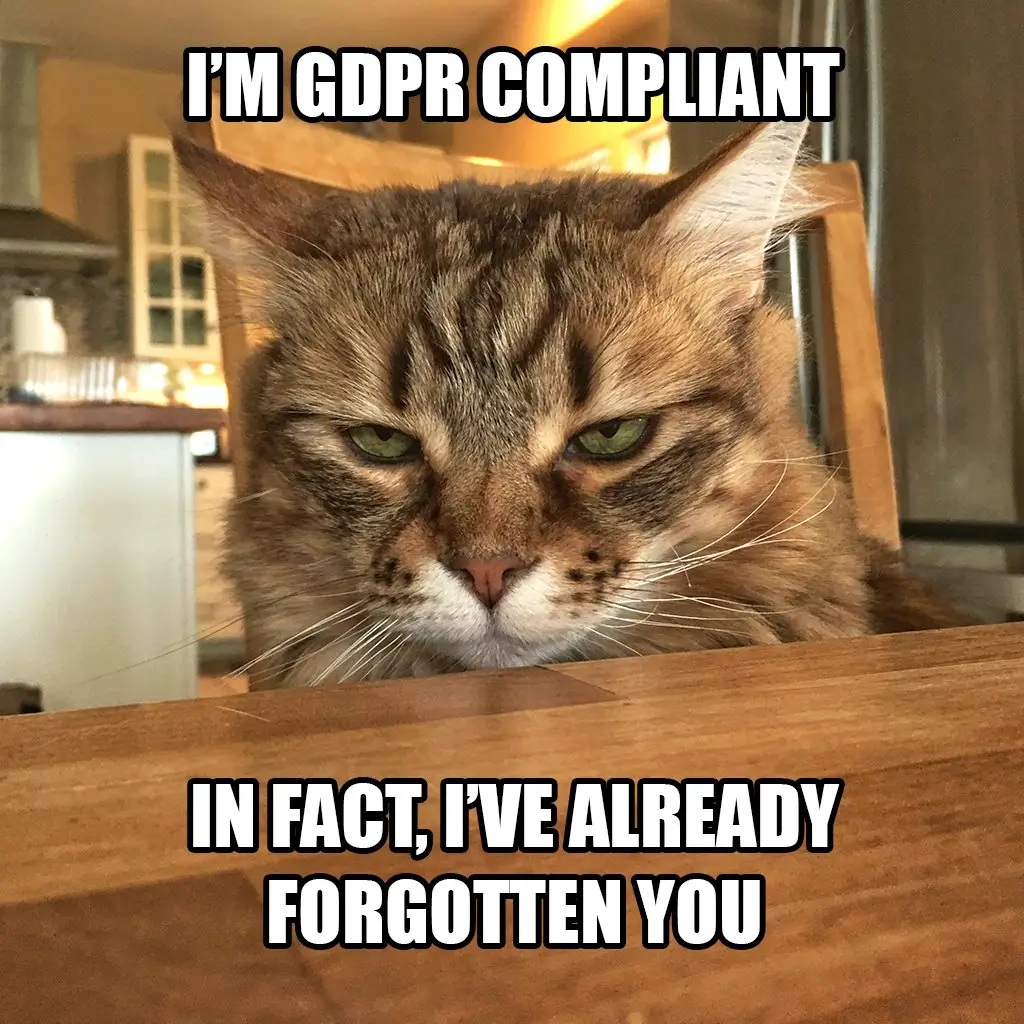Creating a GDPR data protection policy is essential for businesses as GDPR stands for the General Data Protection Regulation in the European Union. However, this can seem like a daunting task, but following the right steps can ensure your business meets all the necessary requirements.
In short, data compliance is imperative because it ensures that organizations are safeguarding the personal data of their customers, employees, and other stakeholders. Under GDPR, companies must have specific policies and procedures in place. The General Data Protection Regulation (GDPR) is an EU regulation that sets out a set of rules to protect the personal data of individuals within the European Union. It applies to any business or organization that processes or stores customer data, regardless of its size or location. As such, it’s essential for all businesses and organizations to create a GDPR data protection policy as part of complying with this new law.
In this blog, we will discuss what GDPR compliance entails and provide tips on how to create an effective GDPR data protection policy. By taking these steps towards compliance, you’ll be able to provide your customers and partners with peace of mind knowing their personal information is safe.

What is a GDPR data protection policy?
It is recommended that any company which collects personal data from European citizens and permits multiple employees to handle or process the information should have the necessary Data Protection Policy in place. This applies regardless of where the company is based.
GDPR aims primarily to give control to citizens and residents over their personal data and to simplify the regulatory environment for international business by unifying the regulation within the EU. It’s important to note that the policy doesn’t just apply to companies collecting data from European citizens but also to organizations processing data of individuals within the European Union.
A GDPR data protection policy provides guidance on how an organization should comply with this new set of regulations, outlining what measures it will take to ensure that any processing of personal data is done in accordance with applicable laws and regulations. This includes areas such as transparency, security, access rights, storage limitation periods, subject access requests, and breach notifications.
All businesses should tailor their data protection policies to meet their own individual needs and data processing procedures. There is critical importance of tailoring policies to match the specific needs and processing procedures of each individual business, ensuring that the GDPR Data Protection Policy is not only compliant but also effectively addresses the unique aspects of each organization. Those that process special categories of sensitive information, such as race, religion, sexual orientation, etc., must include a specific clause in their Data Protection Policy addressing the handling of this type of data. On the other hand, companies that do not handle such types of information would not need to include this clause. However, there are some general clauses that can be adapted for most online businesses and these should be considered when creating a data protection policy.
A well-crafted policy should include information on the types of data collected by the company, how it’s stored securely, which measures are taken to protect it from unauthorized access or misuse, what rights individuals have regarding their own data (e.g., the right to be forgotten), as well as processes for responding to breaches or complaints related to data privacy.
Why do you need a GDPR data protection policy?
A GDPR data protection policy is essential to ensure that your business complies with the General Data Protection Regulation (GDPR) and provides the necessary protection for personal data. This policy outlines how you collect, store, process, use and protect personal information in a way that meets GDPR policy requirements. A critical aspect of this policy is the integration of DPIA (Data Protection Impact Assessment), a systematic evaluation tool that identifies potential risks in data processing. Additionally, it underscores your commitment to respecting individual rights outlined by the GDPR, including the right to access, restrict processing, and request data deletion or transfer. The policy also outlines your commitment to upholding individual rights as outlined by the GDPR including individuals’ right to access their own data, restrict its processing and have it deleted or transferred elsewhere when requested. Having this policy in place demonstrates compliance with the GDPR regulation and helps protect both your customers, and your business from any potential fines or penalties associated with non-compliance.
GDPR data protection policy best practices
The question is, how can you be sure that your data protection policy is on track? Protecting your customers’ data is a top priority and following best practices can help ensure that their data is protected.
Here are some key tips to keep in mind when creating your organization’s customer data protection policy:
1. Update your data protection policy
Make sure that your policy is up-to-date and comprehensive, so it covers all the necessary requirements of GDPR. It should be easily accessible to users and explain how you collect, use, store, and protect their data.
2. Obtain consent for data collection
Obtaining consent from users when collecting data is important under GDPR standards since users must be aware of what they are agreeing to before providing any information. This includes using clear language with an opt-in or checkbox option that requires active user participation in order to provide consent for data collection activities. This is done to ensure that they are aware of how their data will be collected, used, stored, and shared. It also gives them the opportunity to withdraw their consent if they do not wish for their data to be collected or used in a certain way. Consent should always be obtained prior to collecting any kind of personal information, as failure to do so could result in legal action being taken against an organization. There is importance of data minimization, as it not only aligns with GDPR principles but underscores the critical need to collect and process only the essential personal information. it underscores the imperative to collect and process only essential personal information. This approach not only elevates individual privacy but also guarantees stringent compliance with data protection regulations.
3. Conduct a Data Protection Impact Assessment (DPIA)
Identify and prioritize risks associated with processing personal data. The purpose of the DPIA is to ensure that any new or existing projects are compliant with applicable data protection laws and regulations. It helps organizations identify potential risks related to their data processing activities and determine appropriate measures to reduce those risks.
4. Collect only necessary data
Only collect personal information that you need for specific business purposes and make sure users understand why their data is being collected and how it will be used. Collecting too much data can be costly and time-consuming to manage properly since companies must comply with regulations such as GDPR which require them to keep all collected personal information secure. Companies must also ensure they are not exceeding their storage capacity when dealing with large amounts of user data which can add additional costs to their operations.
5. Implementing a proactive strategy
Implement technical security measures such as encryption of sensitive information and two-factor authentication for access control, where appropriate to protect against unauthorized access or loss of data. A proactive strategy involves preventative measures, while a reactive strategy involves responding to incidents.
6. Implement a reactive strategy
Develop procedures for responding promptly and effectively to any reported breaches of the GDPR regulation or other privacy incidents that may occur within your organization’s systems or networks.
7. Train employees on best practices
It is important to train employees on best practices related to collecting, storing, accessing, and disposing of personal data because it helps ensure that organizations are meeting their legal responsibilities when handling sensitive information. Additionally, training employees on these topics will help protect the organization from potential data breaches and other security risks. Training can also provide a better understanding of how to handle customer requests for access or deletion of their personal data as well as make sure all policies regarding privacy are followed. Furthermore, training can help create a culture where staff members understand the importance of protecting customers’ private information and take steps to do so with confidence.
8. Appoint a Data Protection Officer (DPO)
The DPO will be responsible for overseeing the implementation of GDPR policies and procedures in the company. A Data Protection Officer (DPO) is a critical role in any organization that collects and processes personal data. The DPO, by acting as a key advocate for privacy within the organization, plays a crucial role in fostering a culture of data protection and ensuring that GDPR policies are not only implemented but ingrained into the fabric of the company’s operations. Appointing a DPO helps ensure an organization complies with GDPR, as it requires organizations to appoint a qualified individual who has expertise in data protection law and practices. A DPO will be responsible for monitoring compliance with GDPR regulations, performing regular audits of data storage systems, providing advice on best practices for protecting user data, training staff on proper handling of personal information, and responding to requests from individuals about their rights under GDPR rules. Additionally, appointing a DPO can help build trust between an organization and its customers by demonstrating that the company takes privacy seriously.
9. Implement an automated solution
When it comes to GDPR data protection best practices, one of the most important recommendations is using an automated solution. Automation helps organizations stay compliant with GDPR by providing a simple and efficient way to manage its principles.
An automated solution can help ensure that all necessary processes are in place and operating effectively. Additionally, automation allows for easy tracking of changes and compliance statuses, so any discrepancies or irregularities can be quickly identified and addressed.
10. Create an inventory of all personal data held
Organizations should create an inventory of all types of personal data they hold, where it is stored, and how it is used. This will help them understand what information they are collecting and ensure that it is being processed in line with GDPR requirements. To enhance transparency and accountability, organizations should regularly update this inventory and establish protocols for ensuring that the processing of personal data aligns with evolving GDPR requirements, safeguarding individuals’ privacy.
GET COMPLIANT 90% FASTER WITH AUTOMATION
Simplify compliance and protect customer data with Scytale’s automated GDPR solution
In conclusion, having a GDPR data protection policy is essential for ensuring compliance with General Data Protection Regulation (GDPR) and protecting individuals’ rights over their personal data. Although GDPR is intended to make the world a better place, in reality, it can be quite challenging. With the right automated tool on your side, you can ensure your organization is compliant with the law and prioritizes its customers’ privacy, quickly and efficiently. With Scytale‘s automated compliance solution, organizations can quickly create a comprehensive data policy and meet GDPR requirements without having to manually navigate all complex processes surrounding GDPR.










